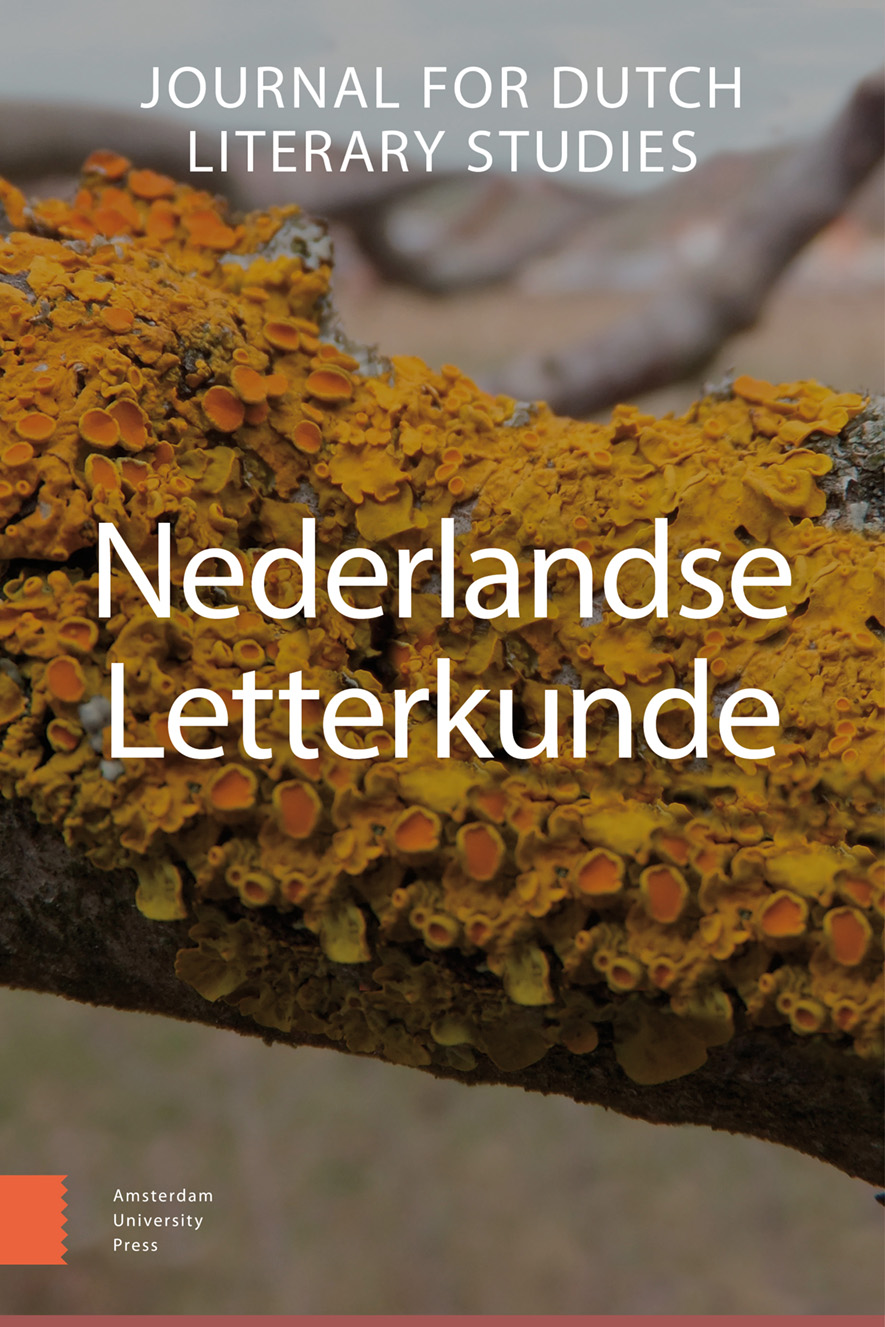- Home
- A-Z Publications
- Nederlandse Letterkunde
- Previous Issues
- Volume 20, Issue 1, 2015
Nederlandse Letterkunde - Volume 20, Issue 1, 2015
Volume 20, Issue 1, 2015
-
-
Terug tot de werkelijkheid?
More LessAbstractBack to Reality? Present-day Documentary Trends in Dutch Literature from a Twentieth-Century Literary Historical Perspective
In contemporary Dutch literary production, the ‘world outside’ has gained ground. The genre of literary non-fiction has conquered a less marginal place in the literary field, but (fictional) novels, too, are characterized by a higher prevalence of factual discourse. In this article, I address how a conceptual framework of documentary literature can elucidate the literary innovations in Samaritaan (2011) by A.H.J. Dautzenberg, Duizend heuvels (2012) by Koen Peeters and La Superba (2013) by Ilja Leonard Pfeijffer. Before analysing these works, I provide a definition of ‘documentary literature’ and explore how it has been conceptualized in literary studies. In order to foreground the novelty in these current representatives, I will also look at the ways in which the phenomenon has emerged throughout Dutch literature in the 20th century. A rhetorical approach is taken to examine which methods are deemed most convincing to achieve a reality effect in literature by the authors under scrutiny. It appears that present-day novels combine reportage and the interview with an autofictional narrator. As opposed to the documentary anti-literature that was typical of the Nieuwe Zakelijkheid and the sixties, a strong blending of documentary signals and improbable elements informs the reading of these texts. Furthermore, blatant subjectivity and self-reflexivity are used as rhetorical devices to consciously construct a reality that is shown to be relevant on a level that exceeds the merely personal.
-
-
-
‘Zoveel ikken!’
More LessAbstractThe Double in Modern Dutch Prose
This article is a survey of different types of doubles (or Doppelgängers) in Dutch-language literature of the twentieth and twenty-first centuries. First, the text explores techniques of narration and focalisation employed to evoke doubles, and demonstrates how readers can be misled in the process. Subsequently, it discusses various phenomena such as shadows, mirror images, alter egos, twins, schizoid characters, etc., organized according to their representation. A distinction is made between external merging (two autonomous characters forming a dyad), external multiplication (one autonomous character being mirrored) and internal fragmentation (one character consisting of several sub-personae). Finally, the article investigates the extent to which the defining characteristics of these doubles manifest themselves in the cited literary texts.
All characteristics are assembled in an orderly table. The structure of rows and columns enables a swift classification of different types of doubles, and allows for an easy visualisation of the changes in their representation and behaviour.
The article contains quotations from texts by Huub Beurskens, Ferdinand Bordewijk, Jeroen Brouwers, Herman Franke, W.F. Hermans, Atte Jongstra, Frans Kellendonk, Willem G. van Maanen, Harry Mulisch, Cees Nooteboom, Simon Vestdijk, L.H. Wiener, Leon de Winter, and Paul de Wispelaere.
-
-
-
Vroege receptie van Tourniers Le Roi des Aulnes in de Nederlandse literatuurkritiek (1970-1972)
More LessAbstractThe early reception of Tournier’s Le Roi des Aulnes in Dutch literary criticism (1970-1972) – a comparison with the reception in France and Germany
This article aims at analysing the early reception by the Dutch literary press of Le Roi des Aulnes, the 1970 novel by the well-known French author Michel Tournier (1924). In this case of literary border transfer, the interpretations and qualifications expressed by Dutch critics are compared to those made by their German and French counterparts.
As it turns out, early Dutch criticism of Tournier’s novel is a hybrid one, oscillating between a more German-orientated, historical interpretation and a psychological, symbolical interpretation, which is typical of French criticism of Le Roi des Aulnes. Moreover, Dutch criticism of Tournier’s novel is far from outspoken, lacking any debate or overtly negative criticism, especially in comparison with certain critics in the German press, such as Jean Améry. As such, no attempt is made to evaluate Tournier’s novel within a distinct Dutch frame of reference, which might be explained by the fact that Dutch critics know that their literary field is a peripheral one, dominated by literary fields such as those in France and Germany. It is also argued that the Dutch, as a polyglot nation, are able to review Le Roi des Aulnes at a very early stage in its original, French version, which could have created a bias towards French criticism.
-
Most Read This Month


